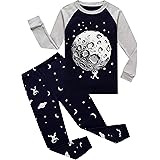The allure of fashion is undeniable, yet beneath its glossy surface lies a significant and often devastating environmental and social cost. The global fashion industry, valued at nearly $100 billion and still expanding, is grappling with the severe implications of its rapid consumption model. As highlighted in the accompanying video featuring activist Livia Firth, co-founder and Creative Director of Eco-Age, the stakes for the planet are incredibly high, with the UN attributing up to 10% of global carbon emissions to this sector. The urgent call for sustainable fashion practices has never been clearer.
Fortunately, solutions are emerging. From innovative design processes incorporating recycled and ethically sourced materials, to concerted efforts by governments, businesses, and individuals, the shift towards a more responsible fashion future is underway. Understanding the pitfalls of fast fashion and embracing conscious consumption are pivotal steps for anyone seeking to contribute to a more sustainable world.
The True Cost of Fast Fashion: Beyond the Price Tag
The appeal of inexpensive, trendy clothing can be strong, but its hidden costs are substantial. The fast fashion model, characterized by quick production cycles and low prices, generates immense environmental strain and human exploitation that demands critical examination.
Rapid Production and Environmental Strain
The environmental footprint of the fashion industry is alarmingly large. It has been estimated that the sector is responsible for a significant portion of global carbon emissions, as much as 10% according to the UN. This impact is largely driven by energy-intensive manufacturing processes, lengthy supply chains, and the prevalence of synthetic, oil-based fibers.
Indeed, approximately 70% of the fashion industry’s textiles are derived from oil, including common materials like polyester and nylon. These synthetic fabrics contribute to fossil fuel dependency and, upon washing, shed microplastic particles that pollute waterways and oceans. The intensive use of water for cotton cultivation and the discharge of toxic chemical dyes into rivers further exacerbate ecological damage, posing a threat to biodiversity and human health.
The Hidden Human Cost: Exploitation
The incredibly low prices of fast fashion garments are often achieved through exploitative labor practices. This reliance on “cheap labor” often translates into conditions akin to “slave labor,” where garment workers are subjected to extremely low wages, long hours, and unsafe working environments.
Many workers, often in developing countries, lack fundamental rights and protections, making them vulnerable to severe exploitation. Awareness of these unethical practices is growing, however, prompting legislative discussions in regions like the European community and America. These impending regulations are expected to make it increasingly difficult for brands to continue profiting from the exploitation of their workforce, pushing for fairer wages and improved conditions across the supply chain.
Navigating the Noise: What is Truly Sustainable Fashion?
With an increasing number of brands claiming to be “sustainable” or “eco-conscious,” discerning genuine efforts from superficial marketing can be challenging. This phenomenon, known as greenwashing, creates confusion for those striving to make responsible choices.
Unpacking Greenwashing
Greenwashing occurs when a company expends more resources on marketing itself as environmentally friendly than on actually implementing sustainable practices. For “active citizens”—a term Livia Firth prefers over “consumers”—this creates a deluge of mixed messages about which brands to trust and what products to purchase. Vague claims, limited “eco-collections” that don’t reflect core business practices, or a focus on easily achievable, minor changes while ignoring larger systemic issues are common greenwashing tactics. Genuine sustainable fashion involves deep, systemic change, not just superficial messaging.
Longevity: The Core Principle
At its heart, sustainable fashion is about durability and mindful consumption. As Livia Firth aptly states, the most sustainable garment is one that is kept for the rest of one’s life. This principle emphasizes investing in quality pieces that are cared for and worn with pride over many years, a stark contrast to the disposable nature of fast fashion.
Adopting this mindset also brings financial benefits. While a high-quality item may have a higher initial cost, its “price per wear” significantly decreases over time, making it a more economical choice in the long run compared to repeatedly buying cheap, short-lived garments. This shift encourages individuals to value their clothing as investments rather than temporary commodities.
Materials Matter: Beyond Oil
The choice of materials is a critical component of sustainable fashion. Moving away from the fashion industry’s reliance on oil-based synthetic fibers, such as polyester, is essential. Instead, an increasing focus is being placed on natural fibers like organic cotton, linen, hemp, and wool, which generally have lower environmental impacts and are biodegradable.
Even more promising is the rise of regenerative agriculture, a practice that improves soil health, sequesters carbon, and enhances biodiversity. Fibers sourced from regenerative farms offer a truly restorative approach to textile production. Additionally, recycled fabrics, which minimize waste and reduce the demand for virgin resources, are becoming an integral part of sustainable design processes, creating a more circular economy within the industry.
Driving Systemic Change in the Fashion Industry
Achieving widespread sustainability in fashion demands a holistic approach, involving a dynamic partnership between governments, businesses, and citizens. Each stakeholder plays a vital role in transforming the industry from one driven by rapid consumption to one rooted in responsibility and resilience.
Government Regulation: Setting the Standards
Governments are increasingly recognized as crucial catalysts for change. Stricter legislation is needed to regulate market practices and hold businesses accountable for their environmental and social impacts. This includes initiatives like Extended Producer Responsibility (EPR) schemes, where brands are held financially responsible for the entire lifecycle of their products, including waste management. Mandatory transparency requirements regarding supply chains and labor practices can also empower consumers and ensure greater accountability within the fashion industry.
Businesses Redefining Their Models
For businesses, true sustainability necessitates a fundamental overhaul of traditional operating models. This involves moving beyond philanthropic gestures or small, inconsequential “capsule collections” to a commitment to circularity. Designing garments for durability, repairability, and eventual recycling is key. Investing in fair wages and safe working conditions for garment workers is not merely an ethical imperative but a foundational element of a truly sustainable enterprise. Furthermore, continuous innovation in eco-friendly materials and production technologies will be vital for long-term viability.
The Power of the “Active Citizen”
Individual actions, when aggregated, create powerful momentum for change. Citizens are encouraged to adopt “slow fashion” principles, which advocate for buying less, choosing quality over quantity, and actively caring for their clothes through repair and maintenance. Participating in clothing swaps, buying second-hand, and demanding transparency from brands about their ethical and environmental practices also contribute significantly. The collective refusal to “shop fast and furiously all the time” sends a clear message to the industry, demonstrating a powerful preference for sustainable fashion.
Ultimately, a systemic approach from these three stakeholders—governments, businesses, and active citizens—is paramount for the transformation of the fashion industry. The discussions featured in the video underscore that while the challenges are significant, the pathway to a more ethical and environmentally conscious future for sustainable fashion is clearly being laid out.
From Waste to Wardrobe: Your Sustainable Fashion Q&A
What is the main problem with the fashion industry today?
The global fashion industry has a significant environmental and social cost, contributing up to 10% of global carbon emissions and often relying on exploitative labor practices for cheap production.
What is ‘fast fashion’?
Fast fashion refers to a business model characterized by quick production cycles and low prices, which leads to immense environmental strain and human exploitation due to rapid consumption.
What is ‘greenwashing’ in the context of fashion?
Greenwashing is when a company spends more on marketing itself as environmentally friendly than on actually implementing sustainable practices, often using vague claims or superficial changes.
What are some core principles of sustainable fashion?
Sustainable fashion emphasizes longevity, encouraging consumers to invest in quality pieces for long-term use. It also focuses on using natural or recycled materials instead of oil-based synthetic fibers.











